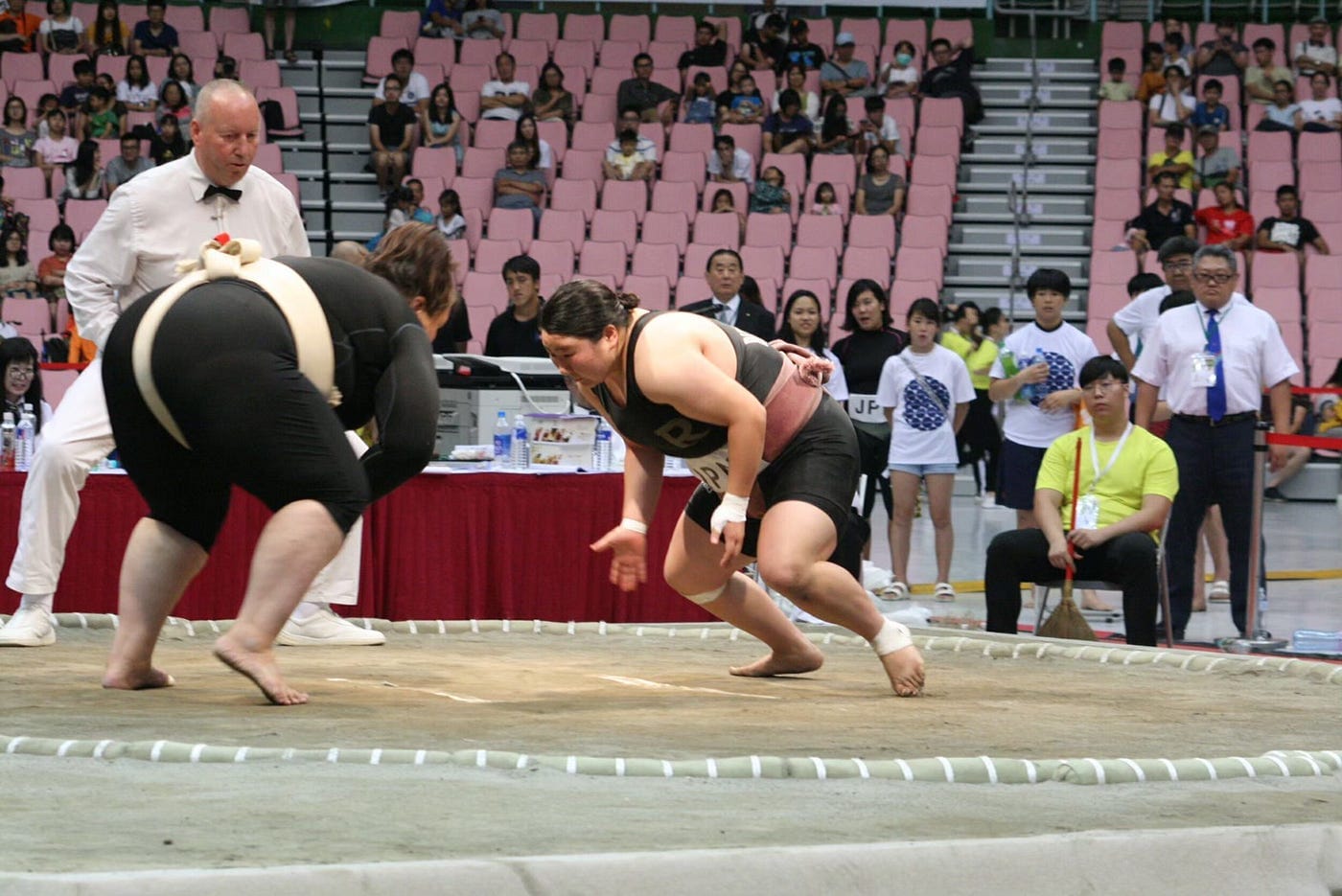The echoes of bodies colliding on the sacred clay dohyō (the raised ring where sumo matches take place) have, for 1,500 years, defined Japan’s most revered sport. But while professional sumo (Ōzumō) is a magnificent tradition, it is rigidly controlled by ancient dogma: the professional ring is exclusively for men.
This exclusion, rooted in the Shinto belief that women are “ritually impure,” stands as one of the final, unyielding barriers in the modern sports world. Yet, an unstoppable shift is occurring beneath this tradition. Meet the “Sumo Sisters,” a growing, formidable group of Japanese women. They are redefining strength, challenging the patriarchy of the Japan Sumo Association, and carving their own path in a sport that has historically barred them. This is a story of an unflinching heart, world-class drive, and the powerful sisterhood changing the narrative.
LordK2's Lens: The Vision That Sparked Our Feature
Our feature on the Sumo Sisters begins with the powerful visual narrative of international artist LordK2. He originally brought them to the attention of G-Woman Magazine through his dedicated photography. His earlier projects captured the traditional virtues of the sport—ambition, obedience, discipline, and honor—within the male world. His decision to now focus on the female rikishi recognizes that these women embody those same virtues while daring to challenge the sport's rules.
His striking images capture raw power and quiet dignity. This visual discovery immediately sparked our curiosity, leading us to research the profound cultural conflict and the personal stories of these determined athletes.
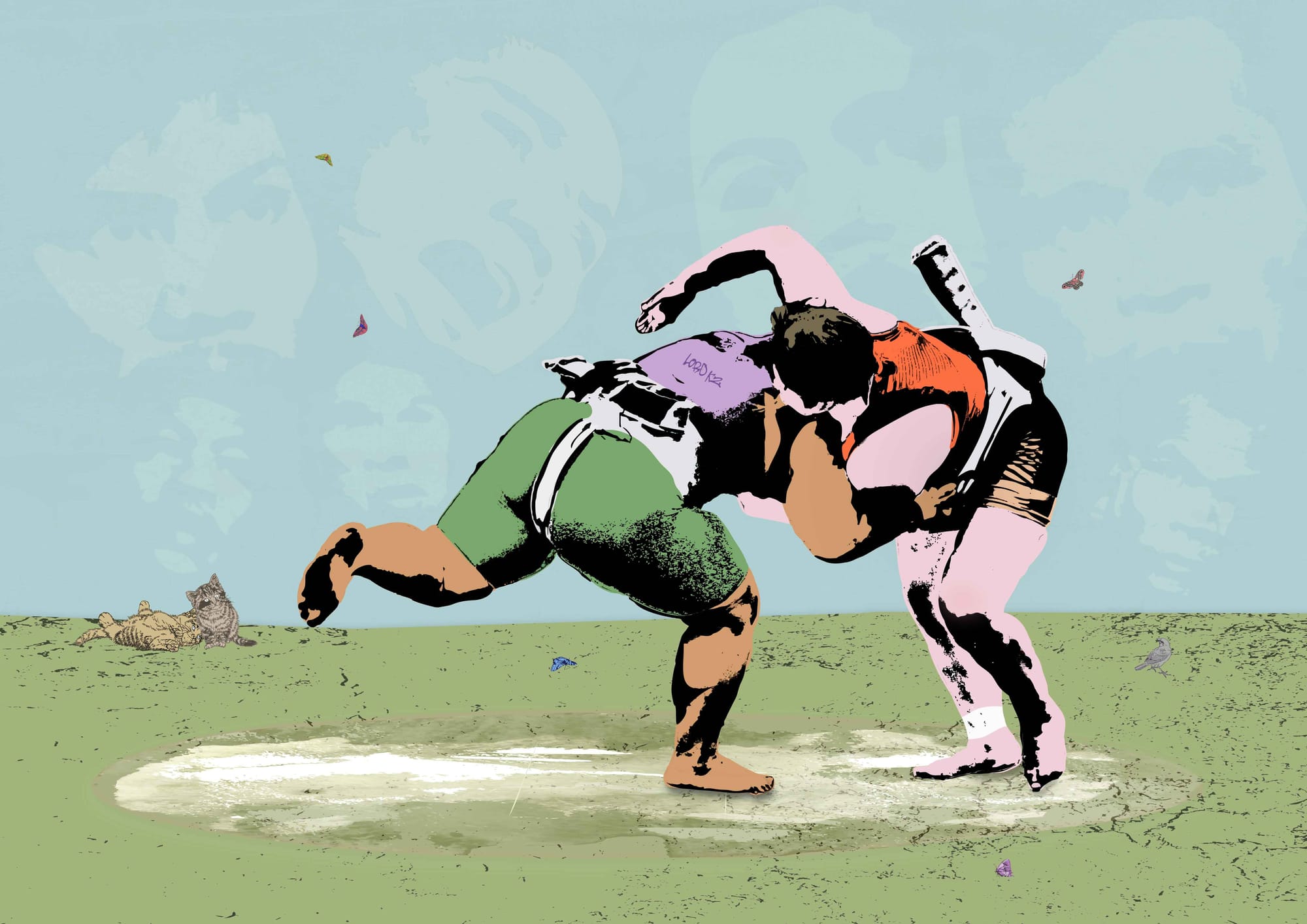
Here is the artist's statement in his own words
"The Sumo Sisters’ exceptional strength, skill, and discipline captivated me from the moment I first saw them train. Though not related by blood, they are united by a deep bond—mental, emotional, and physical—that defines their relationship to the sport and to each other."
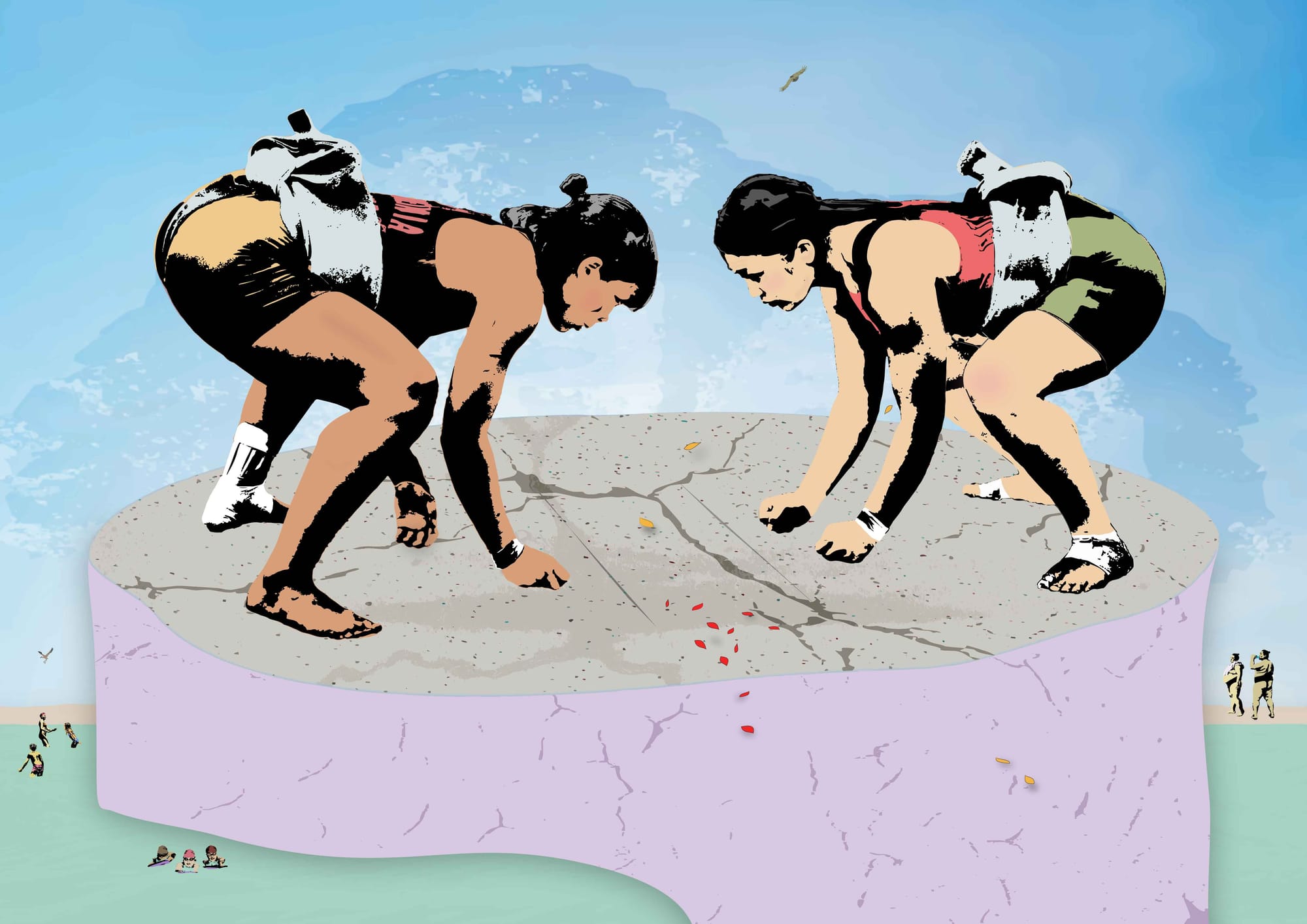
As an artist drawn to stories of resilience and identity, I wanted to explore how these women claim space in a tradition historically dominated by men.
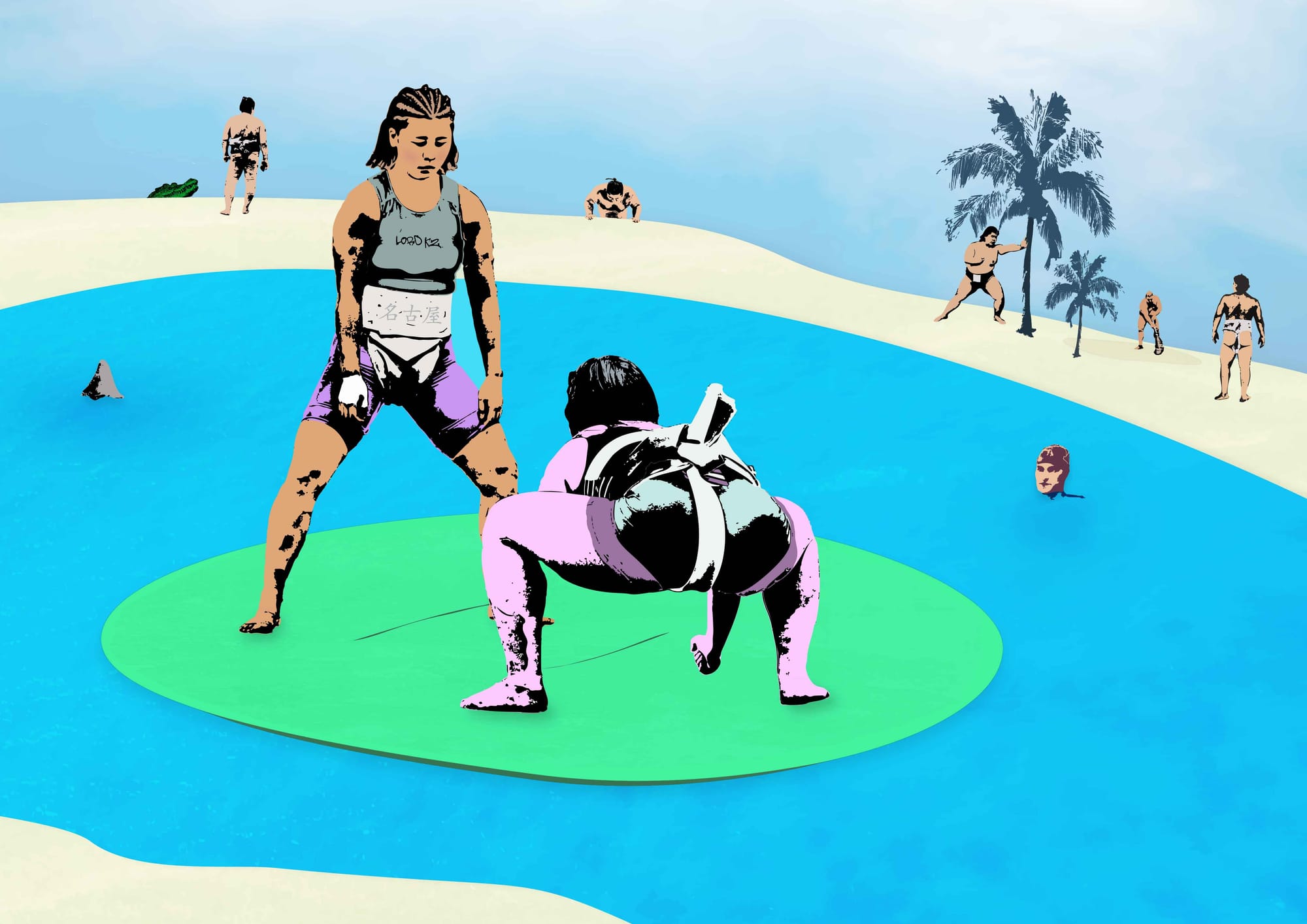
"My images aim to reflect the intensity of their movement, the meditative focus before a bout, and the grace they embody both inside and outside the dojo. This project documents more than physical action; it’s a tribute to perseverance, sisterhood, and cultural evolution. Each surreal environment was intentionally crafted to echo the Sumo Sisters’ strength and spirit, transforming their surroundings into extensions of their inner world."
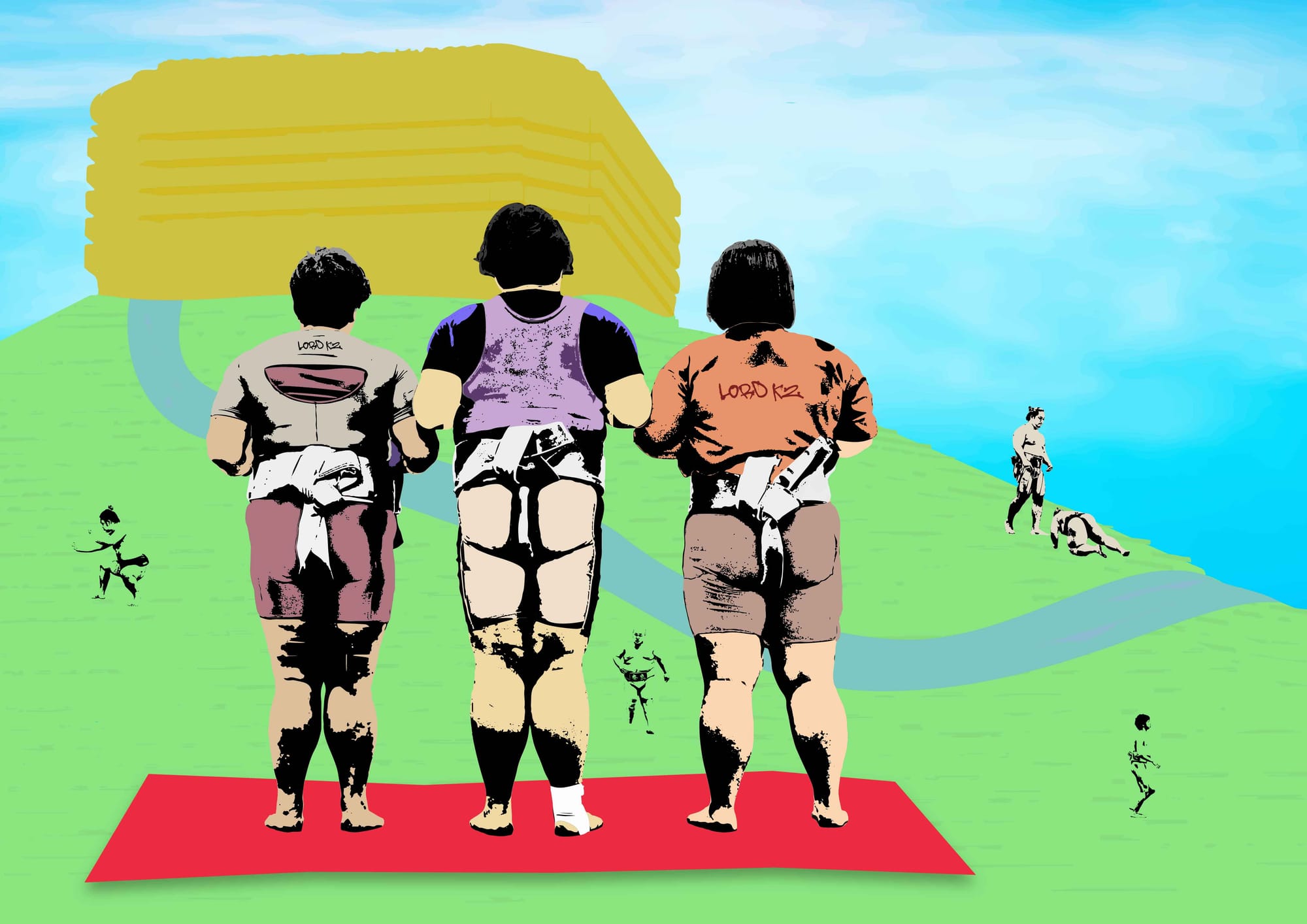
Through this series, I honour them not just as athletes, but as symbols of determination and transformation within a shifting cultural landscape.

LordK2's work is our foundation. His images are integral to the visual story. His documentary art highlights the beauty and legitimacy of female strength, directly confronting passive ideals of femininity. Our collaboration ensures his impactful vision is shared with an audience ready to celebrate these game-changing women.
The New Rikishi: Power, Purpose, and Pushing Back
The global stereotype of a Japanese woman is often one of demure grace. These female rikishi (wrestlers) are rewriting that script with every powerful stomp and crushing victory. They are physically strong, unapologetically powerful, and globally competitive—the embodiment of the Gifted, Genius, and Game-changing woman we celebrate at G-Woman Media.
Take Airi Hisano, recognized as the strongest female rikishi in Japan and a multiple World Championship medalist. A consistent top finisher, she works a full-time job at Tachihi Holdings while maintaining grueling top-tier training. She embodies a deeply relatable ambition: juggling a demanding life with a dream of a world where “there’s no distinction between men and women in sumo.” She aims to see the sport elevated to an Olympic event.
Despite her success, Hisano reveals the heavy societal pressure she faces to quit. She recounts hearing the question, “Why are girls still doing sumo?” and fielding relentless inquiries about her life choices. “Will you get married? What about childbirth, are you thinking about those things?” she says, adding that this constant questioning makes her “sometimes feel like giving up.” This battle highlights the unique cultural expectation that female athletes prioritize child-rearing and housework over an athletic career.
She has been forced to be her own advocate, stating that men have "a wide range of choices" for sponsorship and university, but women must “search for it on their own or they won’t find it.” She adds, “I myself sought out and negotiated and got that environment.”
Then there is Rio Hasegawa, the 2024 Middleweight World Champion and the first female member of the prestigious Keio University Sumo Club since its founding in 1919. In a sport demanding body mass, these athletes directly confront Japan’s intense societal pressure to be “slim” and “beautiful.” As young wrestler Shiho Suzuki notes, “for performance and health, thin isn’t everything.” Their presence on the dohyō is a defiant, powerful celebration of the female physique that shuns conventional, passive ideals.
The stress of this gender-based exclusion is palpable. As Sakura Abe, sister to a formidable young champion, stated with passion, “It’s messed up that a girl who has been working so hard has to feel so much stress because of her gender.” This refusal to be limited by outdated beliefs is the very definition of GUTSY.
The Ritual Barrier: Culture & Conflict
The battle for these women is against an invisible, institutional line. This mirrors Japan’s wider fight for gender equality, occurring in a nation that ranked 118th out of 146 countries in the 2024 World Economic Forum's Global Gender Gap report.
The debate is not new. Historically, women participated in public sumo (onna-zumō), but the professional sport evolved to strictly exclude them. Over a century ago, the pioneering feminist Toshiko Kishida posed a searing question: “If it is true that men are better than women because they are stronger, why aren’t our sumo wrestlers in the government?”
The Japan Sumo Association (JSA) maintains that exclusion preserves the sport's 1,500-year-old Shinto heritage. The dohyō is a sacred altar. This adherence to ritual has been tested repeatedly: the JSA has famously barred female political leaders, such as then-Governor Fusae Ota in 2000, from fulfilling traditional prize-giving duties on the ring itself.
For those defending the JSA's position, the issue is non-negotiable. As one traditionalist has been quoted, "The ritual purity of the dohyō is paramount. Without its ancient religious integrity, professional sumo ceases to be the sacred tradition it has been for centuries."
Mark Johnson, known as the "International Voice of Sumo" and a commentator for over 30 years, offers a sharp, external critique of the JSA’s rigidity. He notes that the association’s reluctance to evolve is due to being “too focused on the past, too focused on Japan, too focused on men.” He asserts that this focus is why the JSA is a "totally male-centric society" that clings to the word "tradition" to avoid reform.
Yet, academic Professor Toshiya Matsuzaki argues, "The refusal to allow women on the dohyō today is a symbolic act that extends beyond religion; it communicates that a woman's authority, even in a position of power, is deemed inferior to a man's ritual purity." Amateur champion Kei Sato offers a direct counter to the "male bonding" argument: "Why can't that same bond be shared with women? Strength is not exclusively a male trait."
Despite this challenge, the athletes are resolute. Female rikishi compete with the traditional belt over spandex shirts and bodysuits, a nod to cultural modesty. Rio Hasegawa notes that this uniform still champions a strong female form: “I’ve never wanted to compete dressed like a man. If I quit sumo, I might think about losing weight.” This is a powerful, personal message celebrating strength over society’s demand for slimness.
The cruel structural paradox remains: without a professional track, funding and public interest are limited; yet, without visibility, a league can never be established. These women tackle this dilemma with sheer will and unwavering conviction.
Cultivating the Future and a Global Legacy
The heart of this revolution beats in dedicated spaces like the Tottori Jōhoku High School, home to the nation’s largest girls’ sumo club. Here, coaches like 24-year-old alumna Nana Kakuda—who was once barred from a tournament simply for being a girl—are mentoring the future. Kakuda's goal is to ensure no girl who wins a championship is ever turned away again.
However, the structural resistance is highly localized: some regional sumo clubs actively refuse to accept female athletes, claiming they have “never taught girls” and therefore cannot coach them.
The commitment to the next generation remains strong, particularly for Rio Hasegawa, whose motivation is deeply personal. She speaks movingly about her desire to honor her late father, stating, “I wish I could be the daughter he was proud of,” adding a profound emotional weight to her victories.
This dedication is echoed by influential voices; as veteran NHK broadcast commentator Fujio Kariya notes, women's sumo “can spark real change—not just in sports, but across Japanese society.”
What emerges from these clubs is a powerful sense of sisterhood. They train side-by-side, supporting each other in a culture that often tells them to prioritize other things. The women's amateur sumo is proving that the sport’s core values of honor, strength, and discipline can be inclusive, vibrant, and globally competitive. It's a sisterhood built on sweat, mutual respect, and a shared dream of equality in their sacred space.
The Sumo Sisters are not waiting for an invitation to join tradition; they are creating a new one. Their dedication, their unwavering strength, and their collective voice are not just fighting for a place in the ring—they are fighting for a place in history. They are the true game changers of Japanese sport, displaying the ultimate guts in their refusal to conform to tradition.


